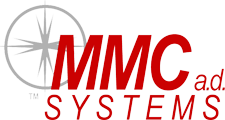Product Requirements

Product requirements should reflect the needs of the market and your target customers, and not a justification for using the latest technology. While it is relatively easy to develop a new state-of-the-art solution, it is more difficult to develop a solution for your key customers and have them use it day in and day out.
Whether you are developing products in-house, in another division or through a third party, you need written product requirements. The more complete they are (not necessarily formal), the more likely you will be to develop and receive the desired product. Product requirements should identify the high-risk development and support areas before any real development begins. They should help determine how much it will cost, and how long it will take to develop your product. Finally, product requirements should help define the product acceptance tests, and provide guidelines for your quality assurance testing.
Project Planning & Management
Who is going to do what when? How long is each task going to take? What are the dependencies between tasks? What is the impact if a problem occurs, or a deadline is missed? What is the benefit if you apply more resources to several tasks, shortening the time for completion?
For large, multi-person projects, project management is crucial to the success of the development effort. With it, you maintain visibility into the development process. You can anticipate problems before they happen, and more rapidly resolve and minimize the impact when they do happen.
Share this: